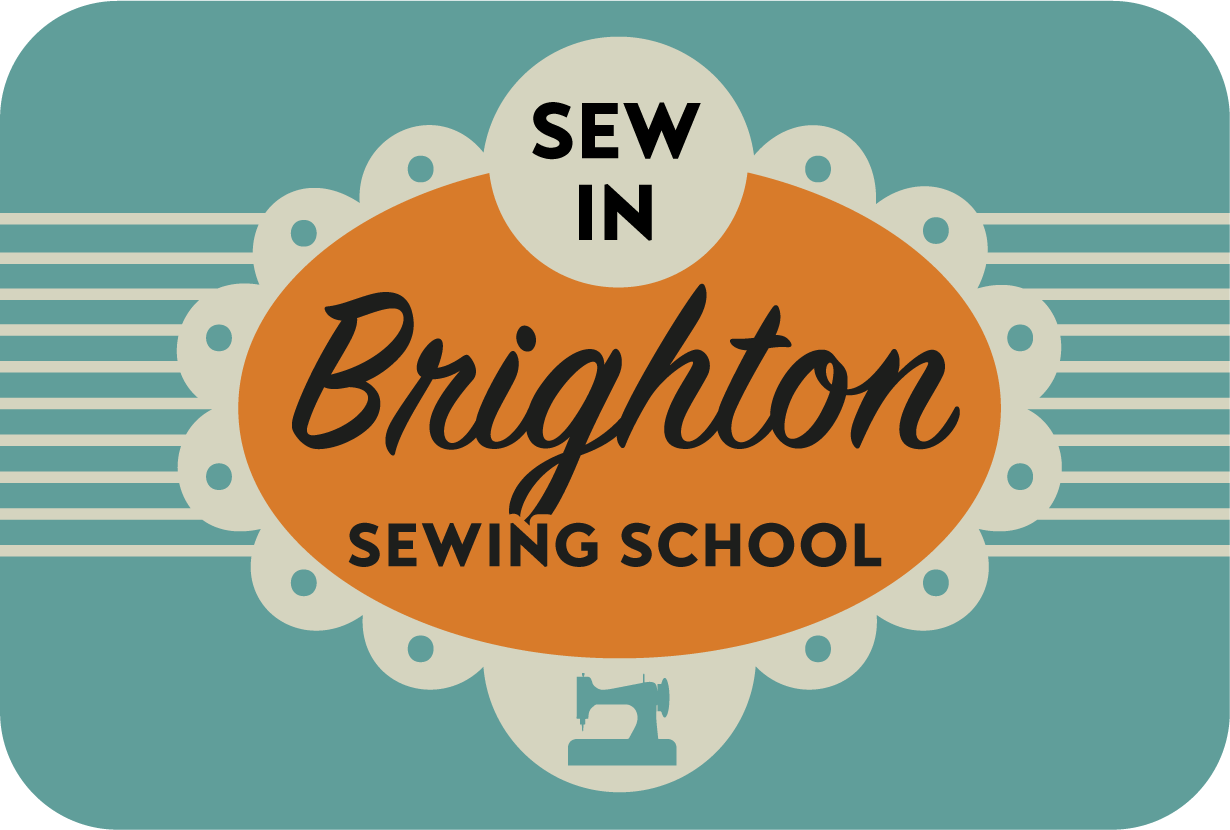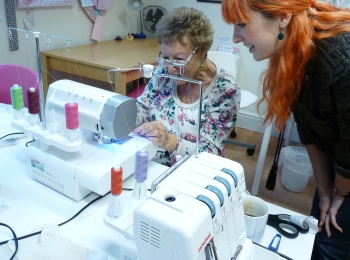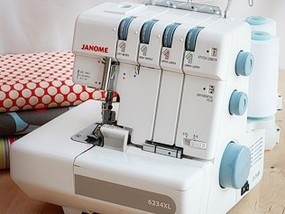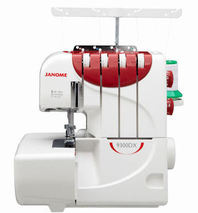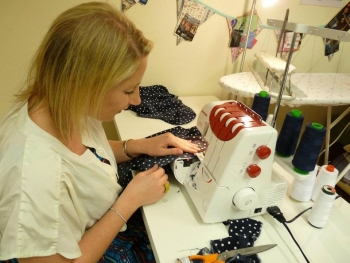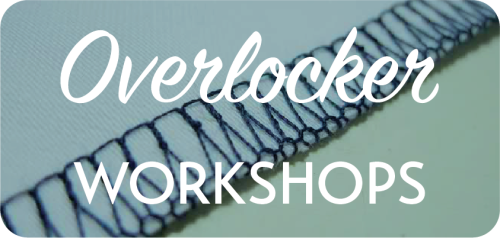What is an Overlocker? (Full article)
Overlockers, originally only used in industrial sewing venues, are a valuable asset to home sewers.
Not long ago, overlockers were only available for commercial use. The machines were huge, heavy and impractical for home sewers. Fortunately, the market has changed and there are wonderful assortments of industrial-quality overlockers, at a variety of price points, designed specifically for home sewers.
Different from a conventional sewing machine that forms a stitch with a bobbin and top thread, an overlocker works with loopers and needle threads that form an overlocking stitch.
When selecting an overlocker, keep in mind that as the number of threads and loopers increase, so does the price of the machine. So, choose the configuration that best fits your needs.
Find out more about our overlocking 1-2-1 tuition & courses in Brighton & Hove, East Sussex here
What is an Overlocker?
An overlocker (also known as a serger) is a special-purpose machine that produces professionally finished seams, like those found on ready-to-wear garments. It uses between two and nearly a dozen threads to encase the raw edge of the fabric with an overcast stitch, while trimming away the seam allowance - all at speeds of up to 1,700 stitches per minute. Instead of a bobbin and single needle, the overlocker has a cutting blade, “loopers” and multiple needles.
Overlockers are used to clean-finish the seam allowances although today’s models can do far more than that, and they have become increasingly easy to operate, creatively diverse in their stitch capability and more economical than ever.
What Does an Overlocker Do?
An overlocker does not replace a sewing machine. Its primary function is to clean finish a raw edge, giving the project a professional appearance. Many overlocking stitches have built-in stretch, making them the perfect tool for seaming knit fabrics. Additionally, the eyes of the loopers are larger than the eyes of sewing needles and can therefore accommodate thicker decorative threads.
About Overlocker Stitches
As the number of needles and loopers increases, so does the diversity of the stitches; and as the stitch diversity increases, so does the price. Once you understand the stitches, you can ask an overlocker dealer which machine best suits your needs.
Overlocker Features to Look For
Everyone has different overlocking needs; however, most agree that the following key features are worth investigating.
Threading Ease: Nothing is more frustrating than a machine that is too difficult to use. Thread and rethread any machine you’re considering buying. Be sure you know how to thread the lower looper; it’s usually the most challenging thread path. Most overlockers have color-coded thread paths and lay-in threading. You can actually pull threads through without completly re-threading usually BUT you want to be able to re-thread if neccessary. Ideally buy from a local shop so they can show you and you can try it. In Sussex try Varneys in Portslade or Brighton Sewing Centre in Hove - details on our sewing machine page here
Differential Feed: This adjusts the movement of the feed dogs, and therefore how the fabric feeds, to eliminate puckers, stretching and ripples in seams. It can also be adjusted to gather the fabric.
Included Accessory Feet: The more accessories that are included with the machine, the better. They’re quite expensive to buy separately.
Instructional Classes and On-Site Repair: If possible, take Overlocker classes to learn all the functions of the machine. Hands-on experience will help you get the most mileage from your purchase. Ask when buying your overlocker if classes and/or an instructional video are included in the cost of the machine. If not, we offer overlocking lessons and workshops here in East Sussex at Sew In Brighton - click here for more info about our lesson and workshop options for learning to overlock with confidence.
LCD Screen: Found on more-expensive machines, the display panel indicates machine adjustment information for all the various stitches.
Conversion Ease: Be sure to ask how the machine converts from a standard overlocker stitch to a rolled hem or chainstitch. Sometimes it’s a button/dial; sometimes it involves disengaging a thread path or adding a conversion plate.
Do You Need or Want an Overlocker?
Do you need an overlocker? Probably no... Do you want an overlocker? Most certainly yes! Once you've used one you won't want to go back to finishing your edges with a domestic sewing machine!
Both beginning and experienced sewers benefit from tools that simplify sewing and make professional results easier. Most sewing machines have an overlock or overcast stitch in their library of stitches, so why do you need an overlocker? You don’t really need one, but they’re nice to have, and, while a sewing machine can certainly perform an overcast stitch, it can’t cut the fabric as it stitches, and it can’t use the thicker, decorative threads that are so popular. And most sewing machines don’t sew anywhere near as fast as overlockers.
Ask Yourself:
- Will you seam knitted or jersey fabrics? What about woven fabrics?
- Will you use the machine for more than edge finishes?
- Will you experiment with decorative threads
- Will you embellish or decorate fabric with the flatlock stitch?
- Will you be sewing curtains, drapes and other large items that require clean seams?
Determine how much you think you will use an overlocker, familiarize yourself with the various stitches and then take time to visit at least two overlocker dealers. Have the dealer demonstrate the machine and explain its stitch capability. Practice threading several different models before making a purchase. If possible, purchase your overlocker from a dealer so you have the opportunity to take classes, ask follow-up questions and utilize convenient repair and maintenance service.
How to get started or improve your overlocking skills
At Sew In Brighton sewing school (based in Hove, East Sussex) we run Overlocker Workshops in which we can show you how to thread up overlockers, adjust tension and differential feed, sew jersey and other fabrics and answer any of your questions you may have about overlockers, how they work and which overlocker is suitable for your needs. Bring your own overlocker machine or learn on ours. We have various class options to help you get to know your overlocker:
- Learn to use an overlocker (use ours or bring yours) with our Overlocker experts on our Love Your Overlocker Workshop or in 1-2-1 lessons
- Learn to use overlockers to make jersey garments or finish the inside edges of your dressmaking projects professionally on our in-class Janome 6234XL overlockers in our Stitch Classes or 1-2-1 lessons. Stitch Classes run 4-6 times a week - various mornings, evenings and weekends and 1-2-1 lessons can be held at time to suit you. We can't teach threading, tension etc on these - just help you use our machines and get a feel for overlocking and of course a fantastic finish to the inside of your made garments!
- Learn advanced overlocking techniques including pintucks, rolled hems, flat locking, gathering, elastic and blind hemming on our Level 2 Overlocking workshop or in a 1-2-1 with one of our overlocker course teachers
- If you are an absolute Beginner to sewing and want to learn to sew with a sewing machine before starting to learn overlocking click here to visit our beginner options menu
